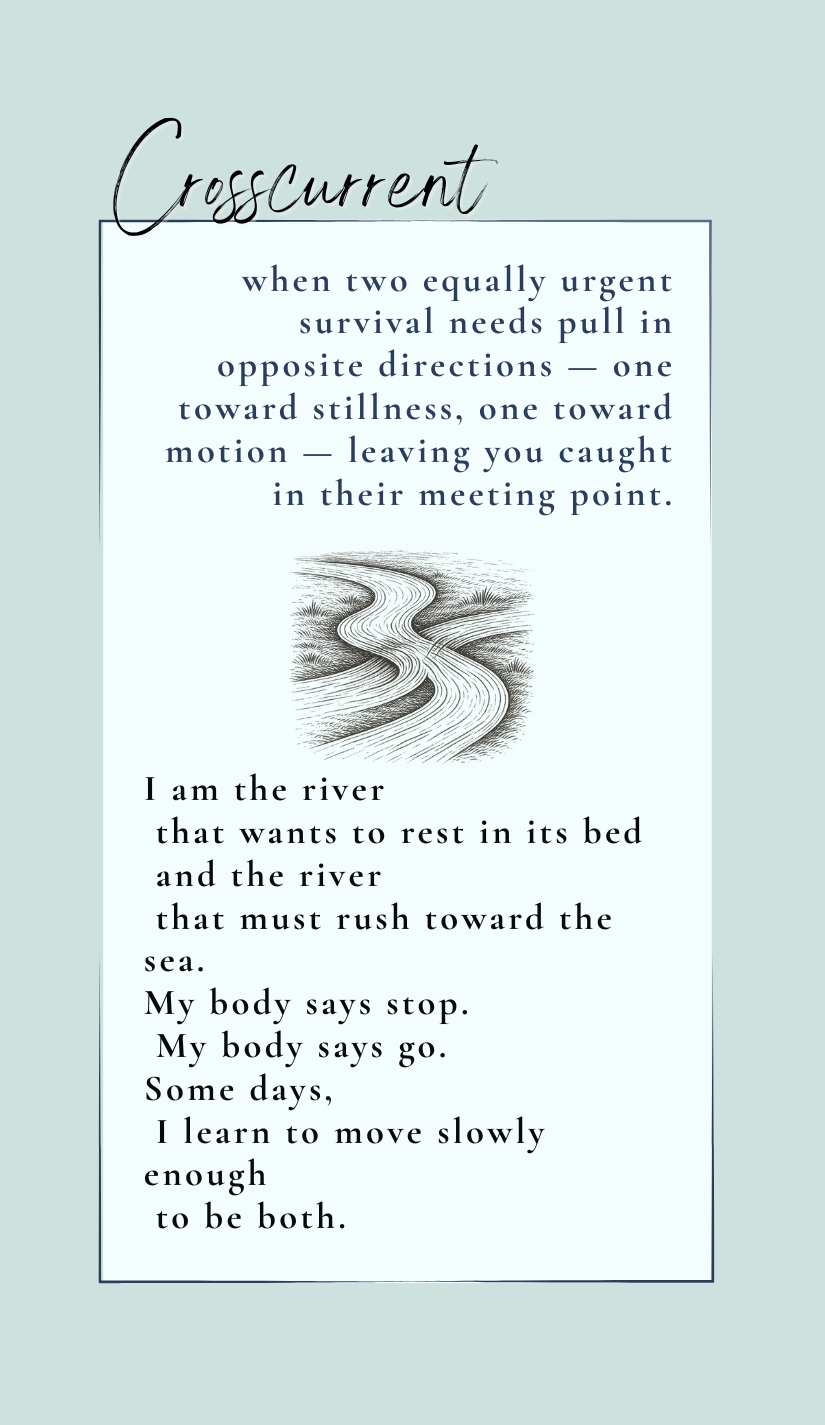The Conflict Between Depletion and Urgency
Sometimes your system holds two different emergency signals — one that says shutdown is the only way to survive, another that says escape is the only way to survive.
Collapse carries the wisdom of conservation, the intelligence of knowing when the system has reached its absolute limit and must stop everything to prevent total breakdown. It says: No more. Complete rest now. Sometimes safety lives in shutting down all systems until recovery is possible.
Flight holds the wisdom of mobility, the intelligence of knowing when changing your environment or situation is essential for survival. It says: Move now. Get to safety. Sometimes survival depends on finding a different place or circumstance.
Both responses are emergency measures that learned their strategies when you needed exactly that kind of protection. Collapse learned that complete shutdown could preserve whatever energy remained when overwhelm threatened to destroy everything. Flight learned that movement toward safety could prevent further harm and lead to relief.
When they both activate, it can feel like being caught in an impossible bind — too exhausted to move but too unsafe to rest, needing to escape but having no energy for escape, feeling both the desperate need for motion and the desperate need for stillness.
This tension isn't about being lazy or restless. It's your system trying to reconcile two different survival imperatives when resources are critically low.
Gentle Reflection
What if the conflict between complete exhaustion and urgent escape isn't confusion, but your nervous system's way of saying "I need safety AND I need rest, but I can't figure out how to get both"?
Collapse isn't about giving up — it's about emergency preservation. Flight isn't about being unable to settle — it's about emergency relocation. Both responses are trying to create the conditions where recovery becomes possible.
Your system learned that sometimes safety requires complete shutdown to prevent further damage, and sometimes it requires movement to a place where rest can actually happen.
The goal isn't to force movement when collapse is needed or force stillness when escape serves — it's to find gentle ways to honor both the need for rest and the need for safety.
Journal Prompts
When do you notice your system wanting to shut down completely? What is it trying to preserve or protect?
When do you feel the urgent need to escape or change your situation? What is that response trying to move you toward or away from?
What would safe rest look like — restoration that doesn't require you to stay in unsafe conditions?
Integration Practice
"The Traveling Rest Stop"
Imagine yourself on a journey where you need both movement and rest.
Picture finding a safe clearing where you can rest briefly, then continue when ready.
Practice taking "micro-escapes" — small movements that create relief without requiring huge energy.
Practice "portable rest" — brief moments of restoration that you can access even while moving.
Feel the rhythm of: pause, breathe, tiny step, pause, breathe, tiny step.
Let yourself move at the speed of someone who is both tired and seeking safety.
Closing Thought
You are not broken when you feel too tired to escape and too unsafe to rest. You are overwhelmed.
You are not stuck when competing survival needs seem impossible to reconcile. You are processing.
The tension between collapse and flight is not a system malfunction — it's information about needing both safety and restoration.
Sometimes the gentlest movement toward safety is rest itself. Sometimes the most restorative rest happens after small movements toward security. Trust your system to find the rhythm that serves both needs.
